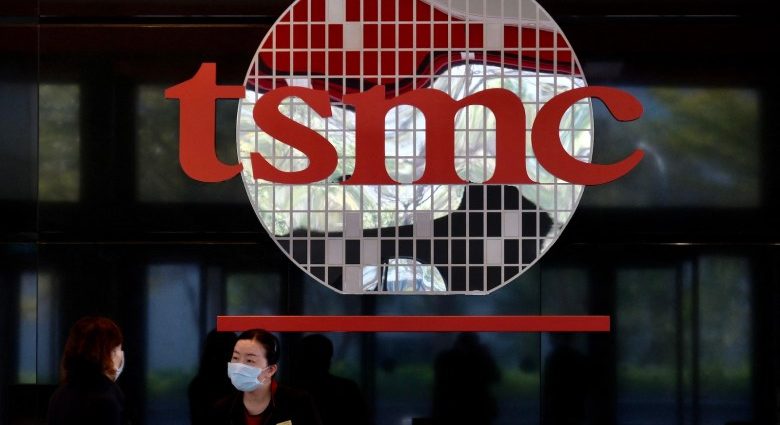A rising number of Chinese chip design firms are placing orders with chip packaging companies in Malaysia in a bid to diversify their supply chains and protect their operations against intensifying US chip export controls.
These Chinese firms are reportedly engaging Malaysian chip packaging service providers to assemble a type of graphic processing unit (GPU) that can be used in artificial intelligence training, Reuters reported on December 17, citing three unnamed sources.
The Chinese requests only entail assembly in Malaysia, a low-technology process that does not contravene any US restrictions, the Reuters report said.
Some contracts have already been agreed, according to two people familiar with the situation. Chinese chip firms are worried that China’s chip-packaging sector will be the next target of the US curbs, the same sources claimed.
Some analysts said if the US imposes restrictions on China’s chip packaging sector, it will do so to achieve two goals: One, to get better control of supply chains for commodity products that can create national security concerns, and two to maintain its broad lead on China in chip technology.
Unisem, a Malaysian chip packaging firm owned by China’s Tianshui Huatian Technology, said it is seeing rising opportunities from Chinese clients.
“Due to trade sanctions and supply chain issues, many Chinese chip design houses have come to Malaysia to establish additional sources of supply outside of China to support their business in and out of China,” Unisem chairman John Chia said according to news reports.
He said most of his company’s customers are from the US. He said he was not too worried about whether his company would provoke the US by packaging GPUs for Chinese customers.
According to Intel, the US accounts for 3% of the world’s chip packaging capacity as it targets mainly the advanced packaging market due to its high labor costs.
The US-based Semiconductor Industry Association said China has 38% of the world’s assembly, testing and packaging market. The figure refers to all kinds of packaging services, from low-end to high-end.
The difference between advanced packaging and ordinary packaging is significant. Ordinary packaging is a low-technology business, which is currently dominated by China and is not hard to replicate elsewhere.
Advanced packaging refers to techniques of combining chips into a package that enhances performance. For example, a “stack” of two 14-nanometer chips can sometimes achieve the performance of a 7nm chip, though at the expense of higher power consumption.
Such “stacking” techniques are also commonly used in the wafer-level packaging of memory chips.
Key players in the advanced chip packaging industry include Intel Corp, Taiwan Semiconductor Manufacturing Company (TSMC), Advanced Semiconductor Engineering (ASE), Samsung Electronics and Amkor Technology Inc, according to a report released by Mordor Intelligence, an India-based research firm.

Intel opened its first international manufacturing facility in Malaysia in 1972. In August this year, the company announced a US$7 billion expansion plan, which will include its first overseas facility for advanced 3D chip packaging in Penang and a chip assembly and testing factory in Kulim.
The Biden administration has adopted a carrot-and-stick approach to try to boost its share in the advanced packaging market, some analysts said.
On November 20, the Biden government said it would commit $3 billion in funding through the National Advanced Packaging Manufacturing Program (NAPMP), which is aimed at building a domestic advanced packaging ecosystem, via the CHIPS for America programs.
The funding will cover six areas including investments in materials; substrates; equipment, tools, and processes; power delivery and thermal management; photonics and connectors; as well as codesign and an advanced packaging ecosystem for the chiplets that can improve performance, reliability, yield and cost in advanced packaging.
The US National Institute of Standards and Technology (NIST), meanwhile, has warned of rising national security risks in the advanced packaging sector overseas.
“Fabricating chips in America but shipping them overseas to be packaged creates supply chain and national security risks we cannot accept,” Laurie Locascio, the under-secretary of Commerce for Standards and Technology and director of the NIST, said in a statement on November 20.
“That is why we envision that, by the end of the decade, the US will be home to multiple high-volume advanced packaging facilities and a global leader in commercial-scale advanced packaging for the most sophisticated chips,” she said.
“This new vision for advanced packaging will enable us to implement President Biden’s Investing in America agenda and make our country a leader in leading-edge semiconductor manufacturing,” US Commerce Secretary Gina Raimondo said last month.

She said in a speech in February that as semiconductors get smaller, chip packaging is becoming increasingly important and should be done locally in the US.
Some commentators said if the US aims next to curb China’s packaging, assembly and testing sector, Southeast Asia will benefit.
“Due to the US curbs, many US chip-making equipment suppliers have shifted their businesses from China to Southeast Asia in recent years,” a Beijing-based IT columnist writes in an article.
“Southeast Asian countries, including Indonesia, Malaysia, the Philippines, Thailand and Vietnam, are also trying to benefit from the United States’ CHIPS and Science Act and capture market shares from China,” he says. “They keep improving their business environment and grooming local chip engineers,” he says.
The writer says Southeast Asia now has a 27% share in the global chip-packaging market, with Singapore and Malaysia seizing market share.
Currently, US companies including Micron, Intel, ASE and Western Digital have set up packaging, testing and assembly units in Penang in Malaysia. Texas Instruments and Infineon Technologies have factories in Malacca while Intel also has a factory in Kulim.
Read: Taiwan deepens squeeze on chip tech leakage to China
Follow Jeff Pao on Twitter at @jeffpao3

